As a young education professor in the 1970s and 1980s, Dr. Tom Martinek was interested in the impact of teacher expectations on students — the Pygmalion effect. He was preparing future PE teachers and working to understand how things like “learned helplessness” might affect students.
“That research was a stepping stone for me to begin to try things out, to take that research and try to apply it to programs in the community,” says Martinek, now a professor of kinesiology.
His early work helped at-risk kids through after-school programs that involved physical activity. They were mostly short-term efforts that ran for a year or two and provided Martinek with fodder for journal articles.
But Martinek wanted to do more. And he thought a framework called Teaching Personal and Social Responsibility through Physical Activity, or TPSR, was the key.
TPSR was developed by Don Hellison, a now-retired professor at the University of Illinois at Chicago. The framework sees sports and physical activity as a way to teach children important skills and values — self-control, respect for each other, trying your best, setting personal goals, and helping others.
Martinek’s opportunity came when the principal of Greensboro’s Hampton Elementary School approached him in 1991 for help.
“She thought the students were really vulnerable to dropout and different kinds of risk behaviors later on,” Martinek says. “She also knew that a lot of these kids didn’t have much to do after school.”
Most of the kids who attended Hampton lived in the nearby Morningside Heights public housing community. With a little funding from an NC State University grant program, Martinek began bussing 24 third, fourth, and fifth graders to UNC Greensboro twice a week after school.
It was the birth of Project Effort, a program that still operates more than 25 years later and has become a national model for using sports to help kids who are at risk develop critical life skills.
A typical after-school session includes reviewing goals, physical activities in small groups, and then discussion and reflection on their activities.
For the students in Project Effort, grades improved, but more important were the changes in in-school behavior. Martinek and two graduate students reviewed four years of data to measure changes in how often students were reprimanded by their teachers or were referred to the principal’s office.
Over the course of a year, the average number of referrals to the principal’s office dropped from 11 to 9 per student. More striking was the reduction in teacher reprimands over the same period — from an average of 41 during the first quarter to 28 during the last, a 31 percent decrease.
Students stayed in the program through elementary school and middle school. When they reached high school, they started directing some of the activities themselves, learning valuable leadership skills.
“I remember a bunch of teenage kids,” says Rashard Jones, who first encountered the program in 2001, when he was an art teacher at Hampton and a youth baseball coach. “The program was intentional about empowering these teenagers.”
Throughout the years, Martinek was there — patient, persistent, purposeful — mentoring UNCG students and the children who came to the program.
Jones remembers one middle school girl in particular. Her father and two brothers were incarcerated. “I know initially she was probably pretty tough to work with,” Jones says. But Martinek persisted. By high school, the young girl was a Project Effort student leader, and she went on to earn bachelor’s and master’s degrees.
“Dr. Martinek has a high level of love, empathy, compassion and just selflessness,” Jones says. “It draws other people in, makes them want to be a part of it.”
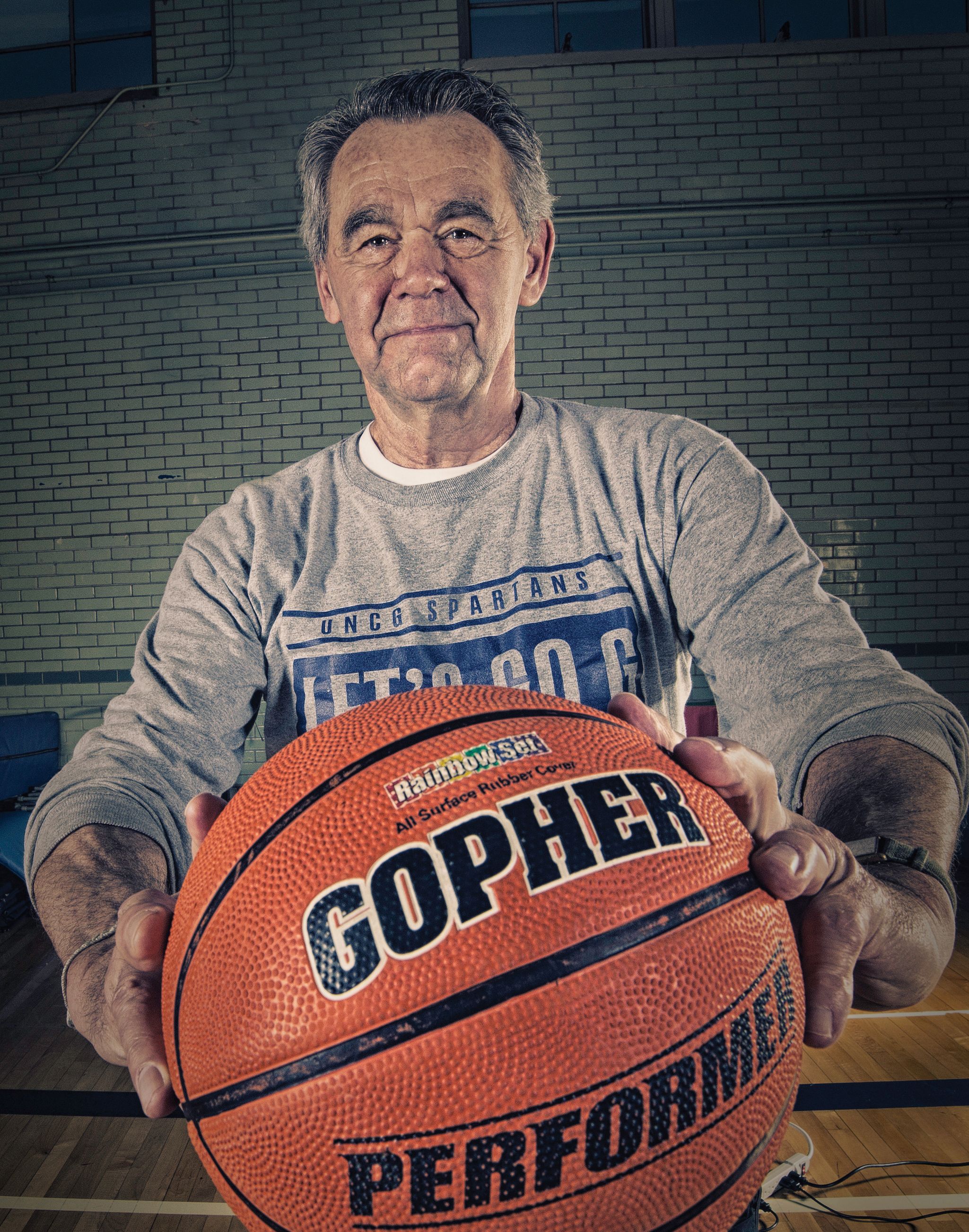
Martinek began his career in education research, investigating the Pygmalion effect.
The Pygmalion effect, named for George Bernard Shaw’s 1913 play, describes how higher expectations of student success by a teacher can promote higher student performance.
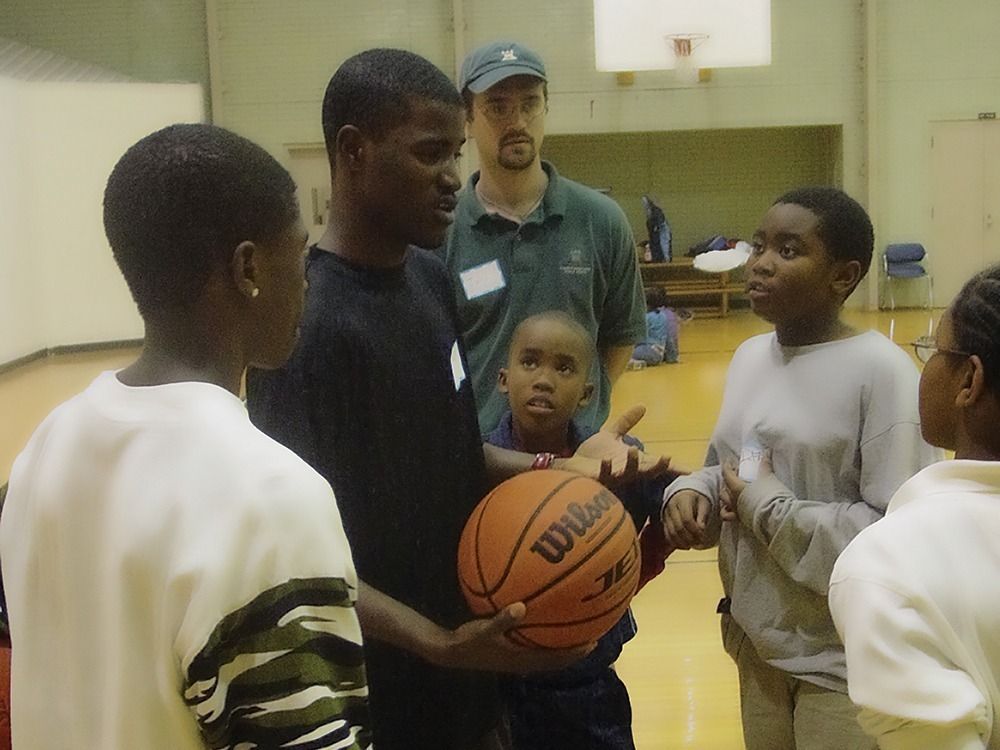
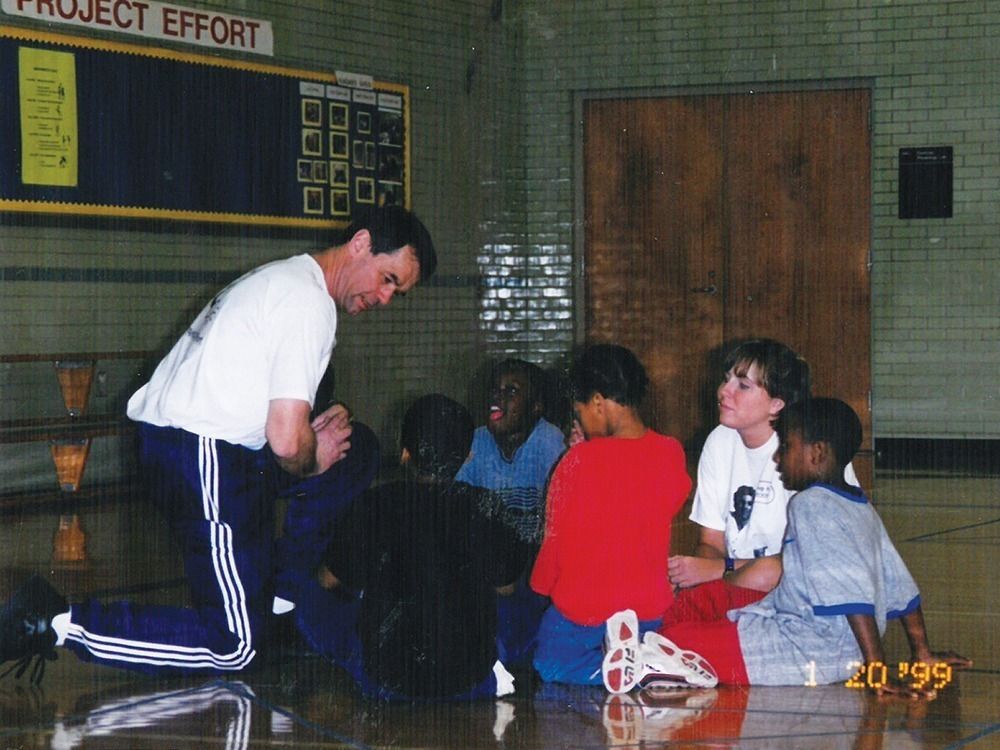
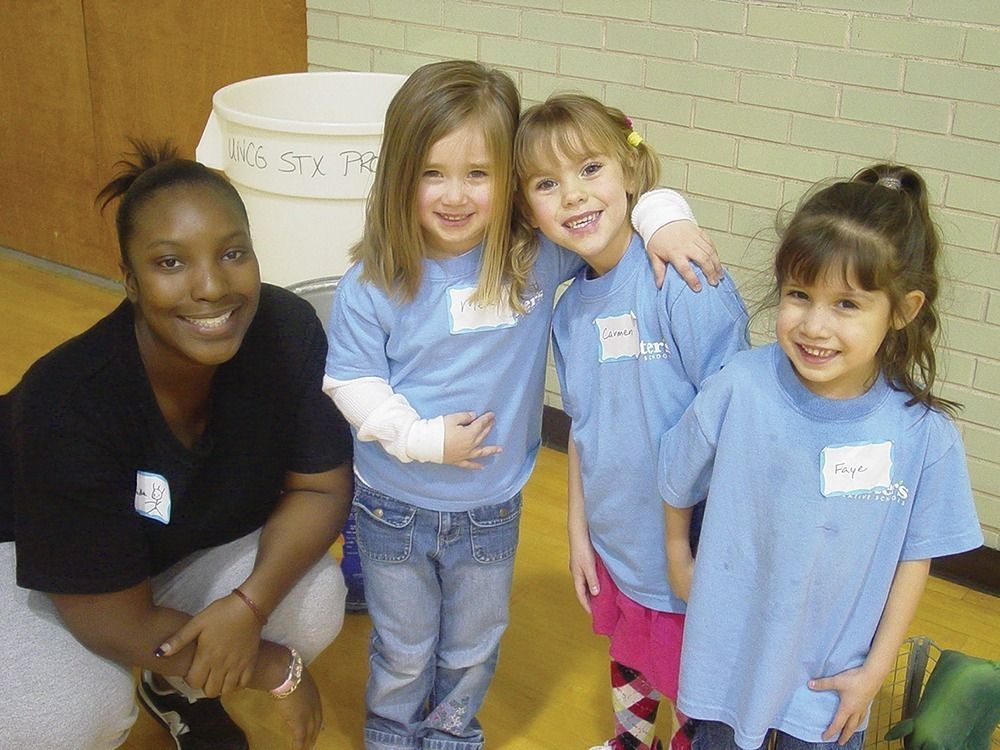
The Teaching Personal and Social Responsibility model uses sports and physical activity to teach children important skills and values, such as self control, respect for each other, trying your best, setting personal goals, and helping others. See more photos on UNCG Research Flickr.
Missed opportunities
Martinek is at the forefront of a growing movement of scholars and practitioners who see sports as an underused method to build stronger societies and help individuals be more resilient.
Santos Flores, a second-year PhD kinesiology student working with Martinek, says youth sports in America often focus narrowly on skill development, reducing the potential positive impact.
“Elite performance deprioritizes life skill development,” he says. “We’re missing a major opportunity to develop youth and sports.”
Children often find themselves focused on a single sport, rather than learning a range of activities. Success means moving into ever more competitive venues — high school sports, college sports, and professional or elite-level amateur sports.
“If we’re only coaching for elite professional athletic development, then we’re only coaching for a very small percentage of the youth population,” Flores says.
Instead, Flores says, young people should be encouraged to participate in multiple sports, which can improve their physical performance and assist in preventing injury.
And most youth sports programs do a poor job of connecting lessons learned in sports to other areas of a child’s life, a key value of TPSR.
Fighting for community
As part of his UNCG master’s degree in peace and conflict studies, Santos Flores studied capoeira in Brazil. The sport — martial arts that sometimes resembles dance more than fighting — is practiced by children and adults.
Capoeira, he says, incorporates many of the same developmental lessons that TPSR does.
“These life skills are being transmitted through the martial arts,” he says. “Capoeira is very unique among sports because it incorporates such a strong sense of community participation across ages.”
Flores hopes to travel to Puerto Rico this year to see how youth sports there might be helping children maintain resilience after a natural disaster. Hurricane Maria destroyed roads, the power grid, and other infrastructure on the U.S. island.
This aligns with his interest in how sports might be used to help children who have experienced large-scale trauma, such as the children of refugees, become more resilient.
In Greensboro, UNCG’s Center for New North Carolinians collaborates with Martinek’s group to bring Project Effort to immigrant and refugee youth.
Sports with a TPSR framework, Flores says, can offer refugee children a chance to build new social relationships and help integrate them into a new culture.
Lessons abroad
Others at UNCG are looking at how TPSR can be expanded and how lessons learned from Martinek’s Project Effort might apply outside the United States.
Assistant Professor of Kinesiology Michael Hemphill met Martinek in 2008 through a workshop at Purdue University, where Hemphill was attending graduate school.
“That was a clarifying moment,” Hemphill says. He realized there had been a lot of work done on how to implement TPSR programs, but not much on how to train professionals to use it.
In Hemphill’s first job after graduation, he helped train undergraduates who would go on to work with youth. He also traveled to New Zealand and began to develop a relationship with a TPSR researcher there.
In 2016, Hemphill came to UNCG. There, he met Dr. Emily Janke, associate professor of peace and conflict studies and director of the university’s Institute for Community and Economic Engagement, who was interested in restorative justice.
As they talked, they discovered they both had contacts at the same New Zealand university. They also began to see parallels between TPSR and restorative justice.
Restorative justice is an approach to criminal justice that focuses on rehabilitating offenders by reconciling them with victims and the community. New Zealand is a global leader in restorative justice; it even has restorative justice schools.
In schools, restorative practices are used as an alternative to traditional disciplinary practices, such as suspensions. Instead, students learn to solve conflicts on their own and in small groups. Like TPSR, the focus is on empowering youth and helping them learn life skills that can help them be more successful.
“I think we’re talking broadly about the same value set,” Hemphill says.
Hemphill wondered whether youth athletics programs could be connected with restorative justice. Last year, he and Janke received UNCG support, in the form of a Faculty First Award and a School of Health and Human Sciences grant, to find out.
It was a relatively unexplored concept in New Zealand. Hemphill interviewed one administrator who was responsible for restorative justice in a school and was also a soccer referee. On the field, the administrator realized, he left restorative justice behind.
“There was this culture of sports that kind of prioritizes winning and kids just having fun,” Hemphill says. “It’s like the last frontier of restorative justice is sports. They just don’t connect.”
But linking TPSR with restorative practices could be powerful, he says.
The result is what Hemphill calls restorative youth sports, a melding of restorative concepts and TPSR.
“There really is an opportunity to think about restorative practices and the way in which we build relationships in sports,” Hemphill says.
“The hope is to pivot and integrate this work locally here in Greensboro.”
Greensboro and UNCG is a good place for that kind of work, Hemphill says, in part because of the foundation Martinek has built over 40 years.
“This university has really made a contribution in this disciplinary area,” Hemphill says. “I couldn’t overstate the contributions that Tom has made.”
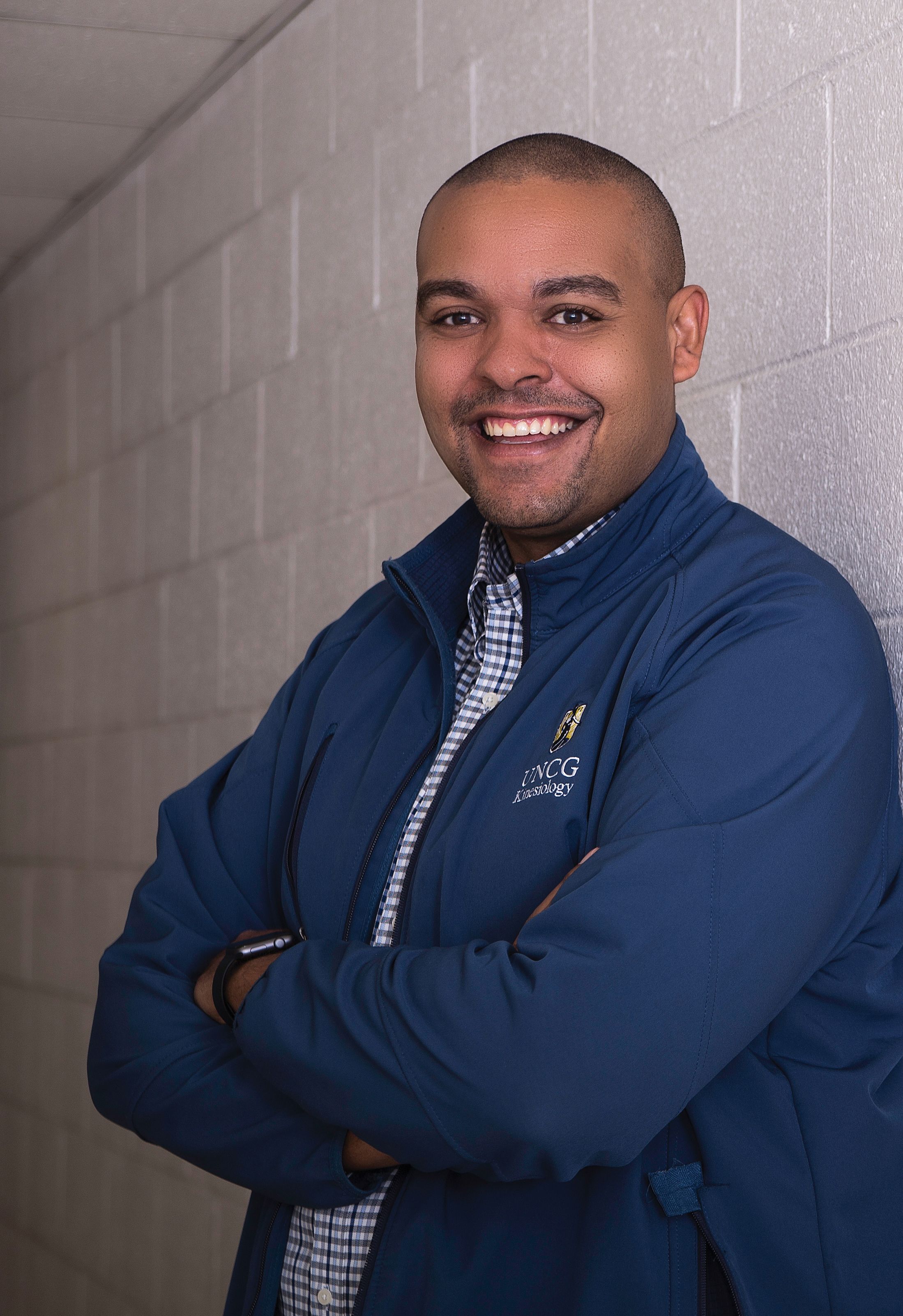
Restorative justice concepts are very common in New Zealanders’ lives — with one notable exception. “There was this culture of sports that kind of prioritized winning and kids just having fun,” Hemphill says. “It’s like the last frontier of restorative justice is sports. They just haven’t connected.”
A game changer
Hemphill says restorative youth sports operate on three levels:
First, everything is done in a “restorative manner,” with the aim of building and maintaining strong interpersonal relationships and a sense of community. For example, there’s a focus on making sure children have their needs met, so they can develop positive relationships with each other and adults.
On the second level are awareness circles, helping youth have constructive conversations and solve problems. Sports provide opportunities for kids to have these conversations and practice self-awareness. Players might ask “Why did I shoot so poorly? Why did I not include my teammates?” Hemphill says. “All kinds of opportunities are there for a student to be engaged.”
The third level comes into play when conflicts or wrongdoing must be resolved. “A facilitator would frame the conversation around what happened and why, what needs to be done to repair that situation, and what can be done for the future.”
Growing with the program
Project Effort is not Martinek’s only legacy. Another is the development of the Middle College at UNCG, a Guilford County public high school Martinek was a key partner in starting.
As they entered high school, some of the students Martinek worked with on Project Effort struggled.
“They would either not show up to school,” Martinek says. “Or they would show up and not do anything. Sometimes they’d show up and cause problems.”
Research done by one of his graduate students indicated a major reason for this was cultural differences between Project Effort and the high school environment.
Martinek dreamed of a school based on Project Effort principles, where those high school students could take leadership roles, make more decisions themselves, and thrive.
He learned that the Guilford County Schools superintendent was interested in a middle college — a public school located on a college campus. It took a few years, but in 2011 the Middle College at UNCG opened.
These days, Middle College high school students help run the Project Effort program. “We’ve got a great group of high school kids who do a great job,” says Martinek. “It’s been a nice marriage.”
Not unlike the marriage that Martinek has forged over the last few decades between UNCG and the community.
Some 800 Guilford County children have been touched by Project Effort.
Project Effort’s influence is also felt in other programs that serve at-risk youth, such as the Communities in Schools African American Male Initiative, run by Jones, the former Hampton art teacher.
“Since we started this program, Martinek has brought Project Effort over every Tuesday,” Jones says. Project Effort leaders mentor the youth in Jones’ program. “Our kids get the benefit from it, because of those kids who are coming from the Middle College.”
No matter how many youngsters these programs touch, the focus remains the same. Martinek wants to give children the sense they can control and improve their own lives.
When Martinek and his students conducted a study following up with adult graduates of Project Effort, they discovered many of the program’s lessons are sticking.
“They all had different pathways, but regardless of the context, one thing that came out was the idea of relationship building,” Martinek says. “And of having had some sense of control over what they could do in their own situations. The idea of self-direction was an important quality they took with them.”
To succeed, you need to feel like you have a say in your destiny.
“Getting the sense that you can change things around, control things, that gives them that foothold,” Martinek says. “I think that’s probably the most important thing.”
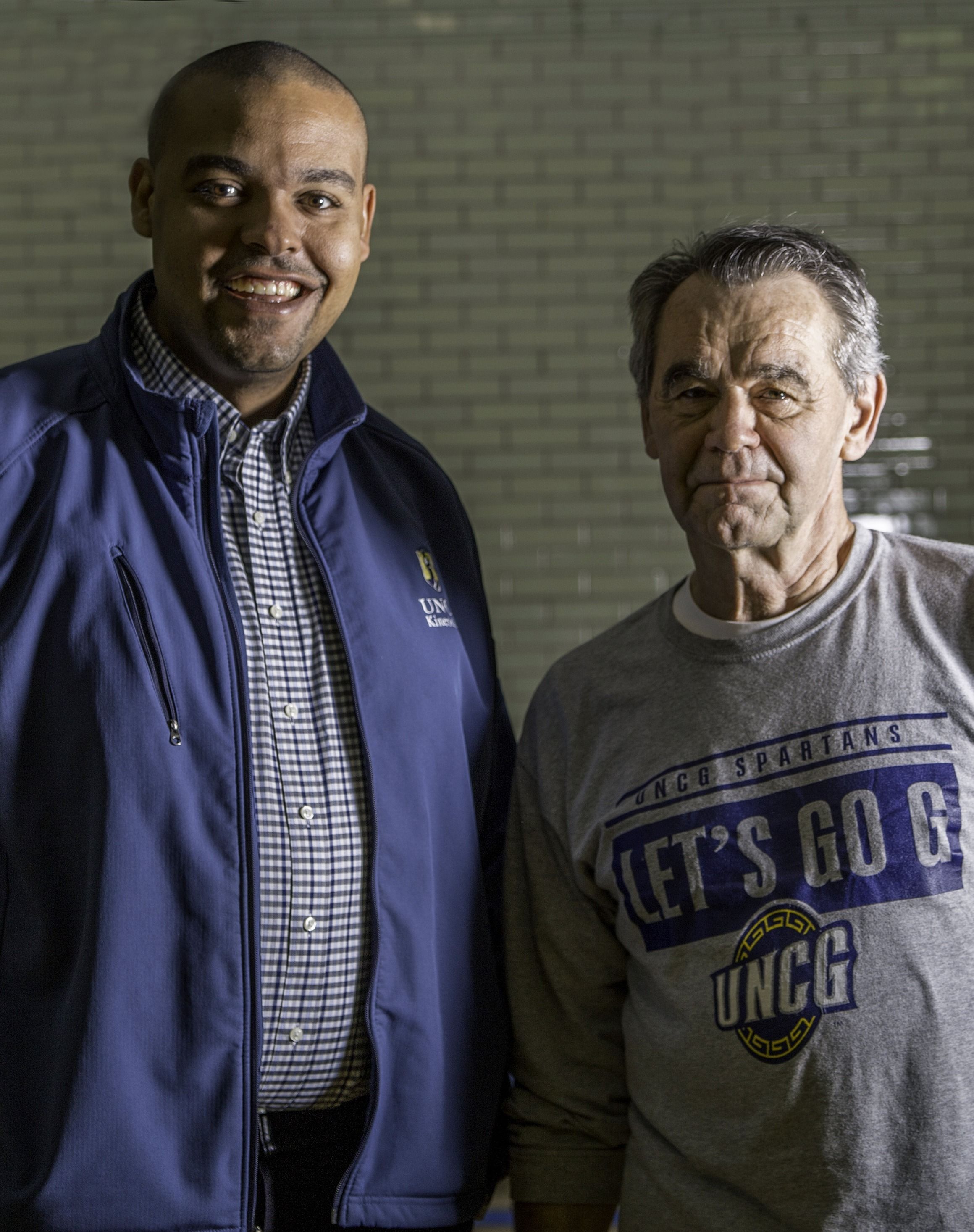
This summer, the Teaching Personal and Social Responsibility Alliance will hold its annual conference at UNCG. The location was selected, in part, to celebrate Project Effort’s 25 years of success.